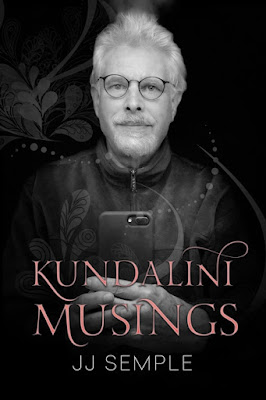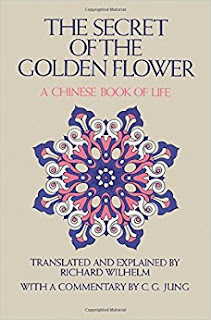There can be a moment in a Kundalini awakening when the overall awareness of the developing powers that Kundalini induces — a deeper insight, a greater left-hand speed on the piano, even the power to not let minor irritations turn into full blown arguments — when everything gets blocked. The awakened energy seems to have lost contact with the things that we hold precious — writing a good book, doing something worthwhile in the village, even making love with the partner we love — and there’s a frightening sense of an explosive energy that’s going nowhere and has no outlet. This can lead to disorientation of the sense of space and time.
The Biblical saying about a camel passing through the eye of a needle (to enter heaven) comes to mind with this sensation of overload, too much energy being forced through too confined an opening. Interestingly, the tantric texts speak of a series of smaller, threadlike nadis within the spinal Susumna Nadi, the brahma and citrini nadis, as fine as ‘the thousandth part of the thickness of a hair’ where the Kundalini energy is at its purest and most intense. When a blockage arises here one feels immensely spaced out, possessing huge energy yet unmotivated, as if there’s the merest needle’s eye between the Heart Chakra and the Brow Chakra for the Kundalini to get through. In traditional wisdom the Visuddha, or Throat Chakra, is called the "Threshold." When it’s blocked, there’s a feeling that the world of the senses has become unreal.
This calls to mind the fact that our sense of place — our position here and now in space and time our is the thing that separates us from the All, from transcendent reality, separates us more than thought or emotion do. I find, personally, that my strongest memories (when the past is most present) are memories of places, rather than of events, or even people. It’s as if the feeling of the body in time and space, at a certain moment and at a certain place, is the closest that memory (and all thought is memory) can come to shared transcendence, and the direct experiencing of the energy continuum. Blake’s words in ‘The Mental Traveler’ are telling:
The Biblical saying about a camel passing through the eye of a needle (to enter heaven) comes to mind with this sensation of overload, too much energy being forced through too confined an opening. Interestingly, the tantric texts speak of a series of smaller, threadlike nadis within the spinal Susumna Nadi, the brahma and citrini nadis, as fine as ‘the thousandth part of the thickness of a hair’ where the Kundalini energy is at its purest and most intense. When a blockage arises here one feels immensely spaced out, possessing huge energy yet unmotivated, as if there’s the merest needle’s eye between the Heart Chakra and the Brow Chakra for the Kundalini to get through. In traditional wisdom the Visuddha, or Throat Chakra, is called the "Threshold." When it’s blocked, there’s a feeling that the world of the senses has become unreal.
This calls to mind the fact that our sense of place — our position here and now in space and time our is the thing that separates us from the All, from transcendent reality, separates us more than thought or emotion do. I find, personally, that my strongest memories (when the past is most present) are memories of places, rather than of events, or even people. It’s as if the feeling of the body in time and space, at a certain moment and at a certain place, is the closest that memory (and all thought is memory) can come to shared transcendence, and the direct experiencing of the energy continuum. Blake’s words in ‘The Mental Traveler’ are telling:
‘For the eye altering, alters all,The ‘flat earth’ is the here and now as it is given to us — what I perceive looking out of my window — and is closer to the reality hidden behind appearances than my mere mental knowledge that the earth is round and has a lot of people on it, none of whom are me. In ‘Milton’ Blake writes:
The flat earth is rolled into a ball…’
‘The Sky is an immortal tent built by the Sons Of Los (divine imagination)This, clearly, is not scientific, but I think it expresses a truth about the borderline between sense experience and transcendence, and the way that the sense of separateness that Kundalini overcomes is rooted in time and space, and in every specific moment of space and time. Similarly the brahma and citrini nadis that are both ‘fine as the thousandth part of the thickness of a hair’ and where the Kundalini Energy is at its purest and most intense, are the threshold where Kundalini, as pure consciousness, consumes this or that thought before it arises.
And every Space that a man views round his dwelling place
Standing on his own roof or in his garden on a mount
Of twenty five cubits in height, such space is his Universe:
And on its verge the Sun rises and sets, the Clouds bow
To meet the flat Earth and the Sea in such an ordered space:
The starry heavens reach no further, but here bend and set
On all sides, and the two Poles turn on their valves of gold;
And if he move his dwelling place, his heavens also move
Where’ ere he goes, and all his neighbourhood bewail his loss…
…As to that false appearance which appears to the reasoner As of a Globe rolling through Voidness, it is a delusion…’


